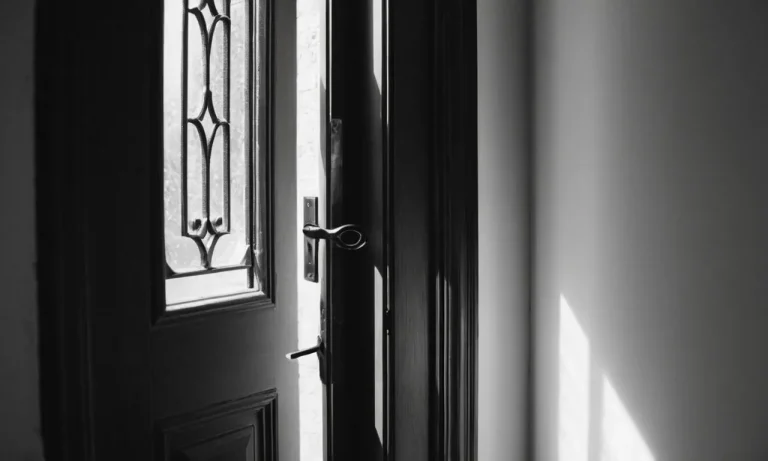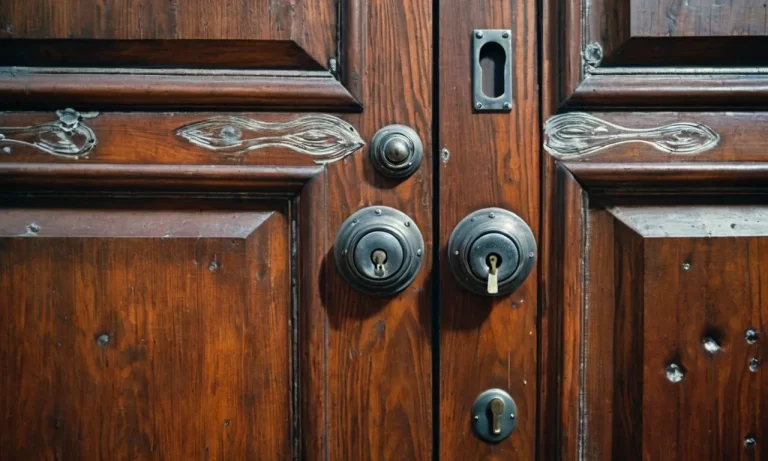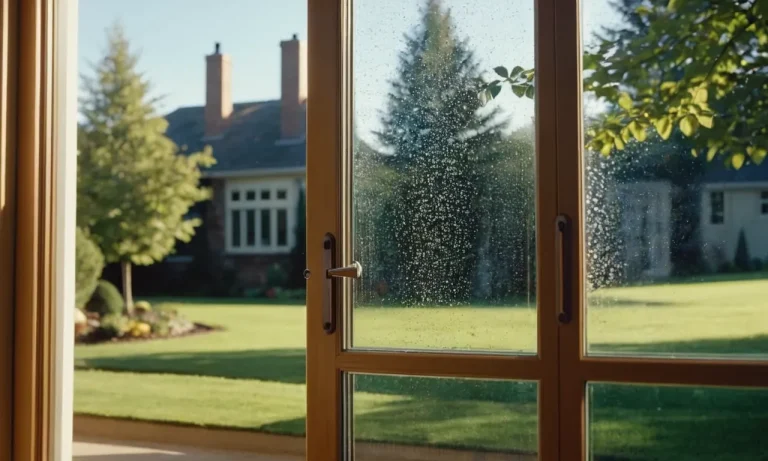Best Paint For Treated Wood: A Comprehensive Guide
When picking out paint for treated wood, you want to make sure you choose the right product. The wrong paint could peel, chip or fade quickly, leaving you with an unfinished look. We’ll walk you through everything you need to know to pick the perfect paint for any treated wood project.
If you’re short on time, here’s a quick answer: Latex primers and paints formulated especially for exterior wood are your best bets for painting treated lumber. Oil-based paints also work well, but require more prep.
In this comprehensive guide, we’ll cover proper prep work, the best types of paints for treated wood, top brand recommendations, and step-by-step application tips. We’ll also look at common painting mistakes and how to avoid them.
With the right techniques and products, you can get a durable, long-lasting paint job that withstands the elements.
Properly Preparing Treated Wood Before Painting
Before applying paint to treated wood, it is essential to properly prepare the surface. This will ensure that the paint adheres well and provides long-lasting protection. Here are some important steps to follow:
Clean the Surface
The first step in preparing treated wood for painting is to thoroughly clean the surface. Use a mild detergent and water solution to remove any dirt, debris, or mold that may have accumulated on the wood. Scrub the surface gently with a soft brush or sponge, and then rinse with clean water.
Allow the wood to dry completely before proceeding to the next step.
Sand the Wood
After cleaning, it is important to sand the treated wood to create a smooth surface. Use a medium-grit sandpaper and sand in the direction of the wood grain. Sanding helps to remove any rough spots, splinters, or imperfections in the wood. It also helps the paint adhere better to the surface.
After sanding, make sure to remove any dust by wiping the wood with a damp cloth.
Fill Any Holes and Cracks
Inspect the treated wood for any holes, cracks, or gaps. These can be filled using a wood filler or putty. Apply the filler to the affected areas, smoothing it out with a putty knife. Allow the filler to dry and then sand it lightly to create a level surface.
This step will ensure that the paint goes on smoothly and covers any imperfections.
Apply Wood Primer
Before applying the paint, it is recommended to apply a coat of wood primer. The primer helps to seal the wood and provides a smooth and even surface for the paint to adhere to. It also helps to prevent moisture penetration and extends the life of the paint job.
Choose a primer that is specifically designed for use on treated wood and follow the manufacturer’s instructions for application.
By properly preparing treated wood before painting, you can ensure a professional-looking finish that will protect the wood for years to come.
Best Paint Options for Treated Wood
When it comes to painting treated wood, it is important to choose the right type of paint that can withstand the elements and provide long-lasting protection. Here are some of the best paint options for treated wood:
Latex Paint
Latex paint is a popular choice for painting treated wood due to its durability and versatility. This type of paint is water-based and dries quickly, making it easy to apply. Latex paint also offers good color retention and resists cracking and peeling, which is essential for outdoor applications.
It is also a great option for those who prefer a low odor paint. Some popular brands of latex paint for treated wood include Behr Premium Plus Ultra Exterior Paint and Sherwin-Williams Duration Exterior Paint.
Oil-Based Paint
Oil-based paint is another excellent option for painting treated wood. It provides a durable finish that can withstand harsh weather conditions and offers excellent adhesion to the wood surface. Oil-based paint also provides a smooth and even coverage, making it ideal for outdoor applications.
However, it is important to note that oil-based paints typically have a longer drying time and require mineral spirits for cleanup. Some popular brands of oil-based paint for treated wood include Rust-Oleum Marine Topside Paint and Benjamin Moore Aura Exterior Paint.
Paints Made Specifically for Exterior Wood
There are also paints specifically made for exterior wood, which can be a great choice for painting treated wood. These paints are designed to withstand the elements and provide maximum protection against moisture, UV rays, and fungal growth.
They often contain additives like mildewcides and UV inhibitors to enhance their performance. Some popular brands of paints made specifically for exterior wood include Cabot Decking Stain and Olympic Stain Elite Wood Stain.
It is important to follow the manufacturer’s instructions when applying paint to treated wood to ensure proper adhesion and longevity. Additionally, it is recommended to properly prepare the wood surface by cleaning and sanding it before painting.
This will help the paint adhere better and provide a smoother finish.
For more information and detailed product recommendations, you can visit websites like Consumer Reports or HGTV.
Top Paint Brands for Treated Lumber
Behr Exterior Paints
Behr is a well-known brand in the paint industry and offers a wide range of exterior paints suitable for treated wood. Their paints are known for their durability and resistance to harsh weather conditions.
Behr’s exterior paints are specially formulated to provide excellent adhesion, coverage, and color retention. They offer a variety of finishes, including flat, satin, semi-gloss, and high-gloss, allowing you to choose the perfect look for your treated wood project.
Sherwin-Williams Exterior Stains and Paints
Sherwin-Williams is another reputable brand that offers high-quality exterior stains and paints for treated wood. They have a wide selection of products designed to protect and enhance the natural beauty of the wood.
Sherwin-Williams exterior stains and paints provide excellent protection against moisture, UV rays, and other outdoor elements. They offer a range of finishes, from transparent to solid, allowing you to achieve the desired look for your treated wood.
Valspar Exterior Paints
Valspar is a trusted brand that offers a variety of exterior paints suitable for treated wood. Their paints are known for their excellent coverage and long-lasting performance. Valspar exterior paints provide protection against fading, cracking, and peeling, ensuring that your treated wood stays looking great for years to come.
They offer a range of colors and finishes, allowing you to customize the look of your project.
Benjamin Moore Exterior Paints
Benjamin Moore is a well-respected brand that offers high-quality exterior paints for treated wood. Their paints are known for their exceptional durability and resistance to the elements. Benjamin Moore exterior paints provide excellent coverage and adhesion, ensuring long-lasting protection for your treated wood.
They offer a wide range of colors and finishes, allowing you to achieve the desired look for your project.
When choosing the best paint for treated wood, it is important to consider factors such as durability, weather resistance, and color options. These top paint brands mentioned above have a proven track record of providing high-quality products that meet these criteria.
Additionally, it is always recommended to follow the manufacturer’s instructions for proper application and maintenance of the paint to ensure the best results.
How to Apply Paint to Treated Wood
Painting treated wood is a great way to protect it from the elements and enhance its appearance. However, applying paint to treated wood requires some specific steps to ensure a long-lasting and beautiful finish. Here are some tips on how to apply paint to treated wood:
Work in Dry Conditions
Before you start painting, make sure the wood is completely dry. Painting in wet or humid conditions can prevent the paint from adhering properly and can lead to peeling or bubbling. It’s best to choose a day with low humidity and no rain in the forecast.
If the wood is damp, allow it to dry completely before applying paint.
Use Proper Brushes/Rollers
Using the right tools is essential for a smooth and even paint finish on treated wood. Choose brushes or rollers that are specifically designed for use with exterior paint. These brushes and rollers are usually made with synthetic bristles or materials that can handle the rough texture of the wood.
They will provide better coverage and make the painting process easier.
Apply Primer First
Priming the wood before applying paint is highly recommended, especially for treated wood. A primer creates a smooth and even surface for the paint to adhere to, and it also helps to seal the wood and prevent moisture from seeping in.
Apply a coat of primer that is specifically formulated for use on treated wood, and make sure to follow the manufacturer’s instructions for drying time.
Apply Two Coats of Paint
For a durable and long-lasting finish, it’s important to apply two coats of paint to treated wood. The first coat acts as a base layer, while the second coat provides additional protection and coverage. Make sure to allow the first coat to dry completely before applying the second coat.
This will ensure that the paint adheres properly and provides maximum protection for the wood.
Allow Proper Dry Time
After applying the final coat of paint, allow the treated wood to dry completely before exposing it to any moisture or heavy use. This will help the paint to cure and harden, ensuring a strong and durable finish.
The drying time can vary depending on the type of paint and environmental conditions, so refer to the paint manufacturer’s instructions for the recommended drying time.
By following these steps, you can achieve a professional-looking paint finish on treated wood that will withstand the test of time. Remember to work in dry conditions, use proper brushes or rollers, apply primer first, apply two coats of paint, and allow proper dry time. Happy painting!
Common Painting Mistakes and Solutions
When it comes to painting treated wood, there are a few common mistakes that people often make. However, with the right knowledge and solutions, you can avoid these pitfalls and achieve a beautiful, long-lasting finish.
Not Letting Stain Dry Before Painting
One of the most common mistakes when painting treated wood is not allowing the stain to dry completely before applying paint. This can lead to poor adhesion and a less durable finish. It is crucial to follow the manufacturer’s instructions and let the stain dry for the recommended time.
Typically, this can range from a few hours to a few days, depending on the type of stain used. Patience is key in this step, as rushing the process can result in a subpar outcome.
Using Interior Paint
Another mistake to avoid is using interior paint on treated wood. While interior paint may seem like a convenient choice, it is not designed to withstand the harsh outdoor elements. Instead, opt for exterior paint specifically formulated for use on outdoor surfaces.
Exterior paint is designed to resist fading, cracking, and peeling, making it ideal for treated wood that is exposed to the elements.
Applying Paint Too Thick
Applying paint too thick is a common mistake that can lead to an uneven finish and poor durability. When painting treated wood, it is important to apply the paint in thin, even coats. This allows for better adhesion and helps prevent drips and runs.
If you find that your paint is too thick, you can add a small amount of water to thin it out. Remember, multiple thin coats are better than one thick coat.
Not Allowing Proper Dry Time Between Coats
Lastly, not allowing the proper dry time between coats is a mistake that can compromise the integrity of your paint job. Each coat of paint needs sufficient time to dry and cure before applying the next one. Failure to do so can result in a tacky finish and poor adhesion.
Be sure to follow the manufacturer’s instructions regarding dry time between coats. In humid or colder conditions, additional dry time may be necessary.
By avoiding these common painting mistakes and following the recommended solutions, you can ensure that your treated wood receives the best paint job possible. Remember, preparation and patience are key to achieving a beautiful and long-lasting finish.
Conclusion
With the right prep work, paint products and application techniques, you can achieve beautiful, long-lasting results when painting treated wood. Be sure to properly clean, sand and prime the wood first. Opt for high-quality exterior latex or oil-based paints formulated for wood.
Apply in thin, even coats and allow plenty of dry time between coats and before adding a second finish coat. Avoid common mistakes like using interior paint or applying paint too thick. Following this guide will help you get a durable, professional-looking paint job on any treated wood surface.







